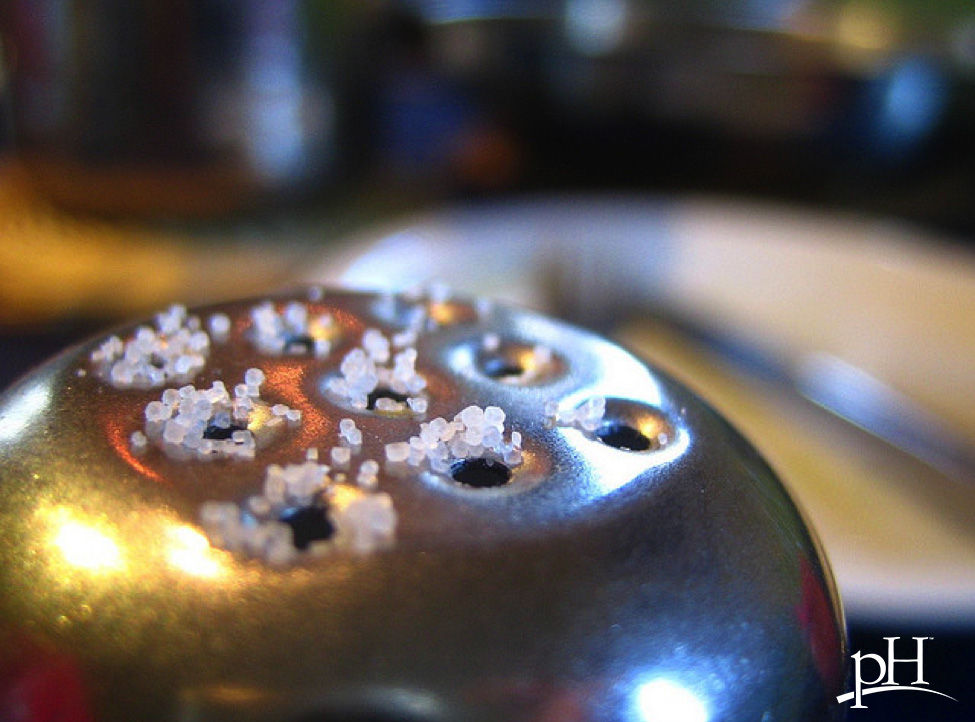Pass the salt: Are you seasoning your way to optimal health or hazard?
11 years ago | Nutrition
Photo credit: Tin G, Creative Commons
By pH health care professionals
The problem? Too much sodium!
Many people get sodium from table salt (which is 40 percent sodium) and packaged foods. The typical American consumes about 3,000-5,000 mg of sodium each day, and salt lovers may be consuming twice this much. But the Dietary Guidelines for Americans recommends limiting your sodium intake to 2,300 mg or less. If you are older than 50, African American or at risk for high blood pressure, the recommended intake is 1,500 mg a day or less.
How does sodium impact your health?
Your body needs sodium to function efficiently. For example, sodium is essential for proper hydration, pH balance and muscle contractions. So some sodium in your diet is good, but too much can be harmful to your health. Excess sodium causes your body to retain water -- where sodium goes, water flows. When your body retains water, your kidneys may not be able to work fast enough to eliminate it. This causes your heart to have to work harder to pump more blood and to increase the pressure in your arteries. The harder your heart works, the more at risk you become for other chronic illnesses such as:
- Hypertension
- Stroke
- Osteoporosis
- Stomach cancer
- Kidney disease
- An enlarged heart muscle
- Headaches
According to the New England Journal of Medicine, if Americans were able to cut their salt intake in half, there would be:
- 60,000 fewer new cases of coronary heart disease per year
- 54,000 fewer heart attacks per year
- 44,000 fewer deaths from all illnesses per year
- 32,000 fewer strokes per year
What can you do?
If you need to reduce your sodium intake, do the following:
- Eat fewer packaged and processed foods. At least 75 percent of your sodium comes from packaged foods. So even if you’re not a habitual saltshaker, you may be consuming more than you realize. Items with long shelf lives -- like salad dressings, soups and TV dinners -- generally have high sodium levels. Opt for fresh foods from the produce aisle and cook your own meals.
- Read food labels. See exactly how many milligrams of sodium are in your food per serving, and make sure you multiply that by how many servings you are consuming to get an accurate picture.
- Try other seasonings. If you’re used to reaching for the saltshaker, try other tasty seasonings to flavor your food like garlic, lemon and lime, herbs and spices.
- Increase your physical activity. Exercising on a regular basis is an important part of any healthy lifestyle, but especially when it comes to lowering your blood pressure and reducing your risk for hypertension – which about a third of U.S. adults have. If you’re reducing your salt intake to prevent or treat hypertension, you’re on the right track, but research shows physical activity is also a critical piece of the puzzle.
- Understand the impact of sodium on your medical condition. If you have an illness or disease, be proactive and stay up-to-date with research on how salt affects your condition. For example, new research shows that eating too much salt may make multiple sclerosis symptoms worse.
Estimates show a reduction in sodium intake would reduce health care costs by $10 billion each year and give Americans 194,000 more years of life.
Be proactive! Come into Proactive Health Labs to get a status update on your mineral levels, so you can see exactly what you are deficient in, or what you have too much of.
Enjoy Your Healthy Life!
The pH professional health care team includes recognized experts from a variety of health care and related disciplines, including physicians, attorneys, nutritionists, nurses and certified fitness instructors. This team also includes the members of the pH Medical Advisory Board, which constantly monitors all pH programs, products and services. To learn more about the pH Medical Advisory Board, click here.







